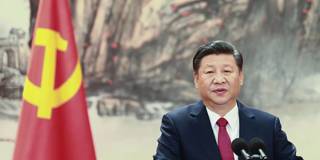China spent much of 2014 seeking to revive the concept of “Asia for the Asians” that Japan proclaimed seven decades ago, when it was an imperial power seeking to impose its will on the region. But that effort may not end as badly for China as it did for Japan.
SEOUL – China spent much of 2014 seeking to revive a concept that Japan proclaimed seven decades ago, when it was an imperial power seeking to impose its will on the region: “Asia for the Asians.” But that effort may not end as badly for China as it did for Japan.
International relations tend to become destabilized by rapid changes in the distribution of power. Established powers’ resistance to their rising counterparts’ demands for a larger role in setting the global agenda fuel tensions and disrupt the existing world order.
That is precisely what has been occurring lately between China and the United States, and is the impetus for China’s “Asia for the Asians” policy. In November 2013, China shook the regional order by unilaterally declaring an air-defense identification zone (ADIZ) over a large swath of the East China Sea that includes disputed territory – notably the Senkaku Islands (known in Chinese as the Diaoyu Islands) that are claimed by China, Japan, and Taiwan.

SEOUL – China spent much of 2014 seeking to revive a concept that Japan proclaimed seven decades ago, when it was an imperial power seeking to impose its will on the region: “Asia for the Asians.” But that effort may not end as badly for China as it did for Japan.
International relations tend to become destabilized by rapid changes in the distribution of power. Established powers’ resistance to their rising counterparts’ demands for a larger role in setting the global agenda fuel tensions and disrupt the existing world order.
That is precisely what has been occurring lately between China and the United States, and is the impetus for China’s “Asia for the Asians” policy. In November 2013, China shook the regional order by unilaterally declaring an air-defense identification zone (ADIZ) over a large swath of the East China Sea that includes disputed territory – notably the Senkaku Islands (known in Chinese as the Diaoyu Islands) that are claimed by China, Japan, and Taiwan.